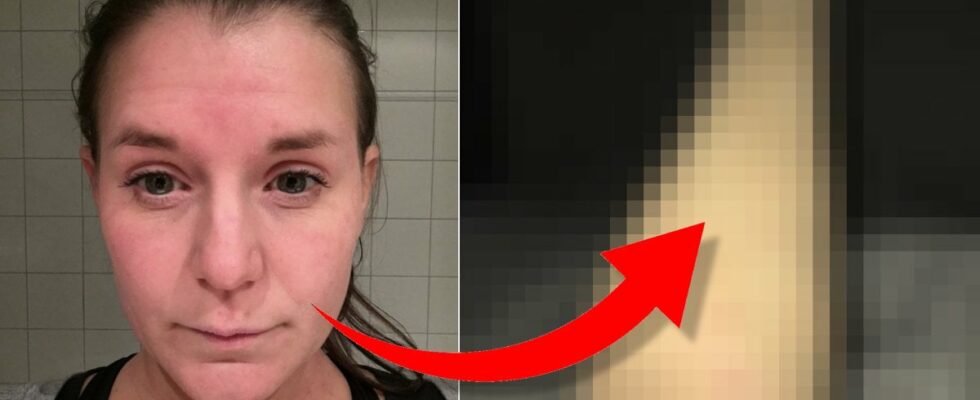Like many others had Caroline, 38, eczema when she was a child. Classic fold eczema that subsided with age. But when she is 23, the eczema came back, worse than before.
DO NOT MISS: The Swedes did that with their tax refund in 2024
– When I was 23, I don’t really know what happened. During a time when I was both studying and working, I got a lot of eczema. There were spots all over the body, it didn’t look like previous eczema and it kind of itched from inside the body, says Caroline to News24.
The new rashes prevented her from doing what she wanted, and everyday life became increasingly difficult.
– I itched around the clock, and found it very difficult to shower and exercise. I felt like I couldn’t be out in society the same way, and couldn’t see my friends.
Tried different treatments – the doctors: Not much to do
Finally, Caroline visited a health center. There she was told that it was atopic eczema, like what she had had when she was younger. The doctor she sees tells her that she has a defective skin barrier, something that is genetic and that there is not much that can be done about it.
Cortisone ointment and Protopic were prescribed.
– It (Protopic, editor’s note) burned a lot. There were bruises on the skin.
The doctors tried to treat the eczema with light therapy. The heat from the light treatment made the eczema itch more. Nothing healed, says Caroline.
– I took it carefully as the doctors said. However, there was very little information I received about how and when to lubricate.
READ MORE: Won 2.6 million kroner – playing Candy Crush
“Paper-thin” skin
Troubles came and went. When Caroline turned 30, she got pregnant and stopped the cortisone.
– I wanted to breastfeed a lot and chose to taper off and finish the cortisone treatment according to the doctor’s prescription. Then it became a different type of eczema and the skin became paper thin, the most fragile of paper, she says, and continues:
– The skin just fell apart. It sounds disgusting, but there were piles of skin flakes in the bed and on the floor. The skin underneath became red and sore. Then it went on like that.
The troubles continued. After Caroline finished the cortisone treatment, the rash appeared on her face, where she had never had eczema before.
Despite this, the doctors continued to prescribe cortisone. When she visits a health center, the medical staff take the liberty of applying the cortisone themselves.
– The doctors said I should lubricate more. When I came in for a visit they just pulled my shirt up and put more cortisone on. It was very omitting. It felt wrong.
The rash itched. The wounds stung. During the nights, Caroline tied her hands so she wouldn’t itch in her sleep.
– I put on gloves and tied my hands together with rubber bands, then I fastened them to the bed so that I wouldn’t itch during the night, she says and continues:
– It itched a lot, but the worst part was how much I was in pain.
READ MORE: Reduced tax for four million Swedes – are you one of them?
Caroline has few pictures from the time when she was ill. This picture was taken when her skin is starting to improve. Photo: Private. Caroline has few pictures from the time when she was ill. This picture was taken when her skin is starting to improve. Photo: Privat. Then Caroline suspected that it was Topical Sterdoid Withdrawal
It took a few years before Caroline began to suspect that it could be Topical Steroid Withdrawal, also known as cortisone addiction. The whole time she felt that it was something other than atopic eczema, she describes.
– You become your own doctor because you don’t get any help. I changed my diet, avoided foods, got an air purifier… I ate incredibly little and lost a lot of weight. It was a groping.
Six years after Caroline stops cortisone, the rash starts to disappear.
Today, Caroline can shower and exercise, as before the rash was at its worst,
– Today I am not ashamed of my face or body in the same way, even though the trauma remains and has affected my self-esteem.
How is your skin today?
– Today it is quite good. I’ve come a long way. I have been perfectly fine now for two or three years now. Before I could have one bran-free day a year, now I’m almost completely bran-free. That’s a huge difference.
Nyheter24 has been in contact with several doctors and researchers. No one has wanted to comment on Topical Steroid Withdrawal and how to treat it.
DO NOT MISS: Linda, 39, lives with leaking rash: “No one listens”
